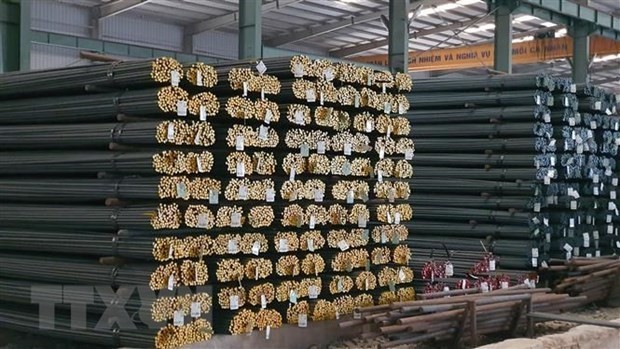
Viet Nam-Laos trade ties growing sustainably
Latest
 |
| Iron and steel are among Viet Nam's major export items to Laos. (Photo: VNA) |
During the 2016-2020 period, the two-way trade saw stable expansion and reached the target of over 1 billion USD, but then suffered from the impact of the COVID-19 pandemic and natural disasters.
The Asia-Pacific Market Department at the Vietnamese Ministry of Industry and Trade (MoIT) said that bilateral trade exceeded 1 billion USD in 2020, down 11.5 percent year-on-year, of which Viet Nam’s exports were worth 571.7 million USD, down 18.5 percent.
However, bilateral trade bounced back since early 2021, surging 33.3 percent to 1.37 billion USD for the year, with Vietnam’s export revenue reaching 594.7 million USD, a rise of 4 percent from 2020, and its imports have hit 778.2 million USD, up 69.8 percent.
The results are attributable to the political resolve by Vietnamese and Lao leaders and the drastic management of competent agencies to remove obstacles facing businesses of the two countries and create optimal conditions for them to quickly adapt to the new situation.
In the first four months of this year, the two-way trade was valued at 558.2 million USD, representing a year-on-year increase of 20.2 percent, of which Viet Nam’s exports were 192.2 million USD, down 11.8 percent.
Viet Nam mainly shipped iron and steel, means of transport and accessories, machinery, equipment, tools, fertilizers, plastic products and vegetables to Laos.
Le Hoang Oanh, head of the department, explained that domestic firms have focused on iron and steel export to the EU, thus resulting in the recent decrease in shipments to Laos.
In the four-month period, Viet Nam imported 366 million USD worth of goods from its neighbour, up 48.5 percent year-on-year. Its major import items included rubber, wood and timber products, fertilizers, vegetables, ore and minerals.
Minister of Industry and Trade Nguyen Hong Dien said since the 11th conference on border commerce cooperation in 2018, bilateral trade ties have made new strides.
The two countries aim to increase their trade by 10-15 percent each year in a stable and sustainable manner, Dien noted.
Experts, however, pointed out that the policies that are intended to attract investments in production, manufacturing, infrastructure, transport and logistics at border gate areas have yet to prove their effectiveness.
According to them, with eight pairs of international border gates, seven pairs of main gates and 18 others of auxiliary gates, Viet Nam and Laos have favourable conditions to boost their trade ties.
The two countries have also benefited from trade agreements with the Association of Southeast Asian Nations (ASEAN) along with their bilateral trade deals. Moreover, Vietnamese goods have been favoured in the neighbouring country.
Vietnamese exporters should also ride the wave of Vietnamese investment in Laos to boost exports, experts said, noting that Viet Nam is currently the third biggest investor in Laos, while Laos is Vietnam’s largest recipient of Viet Nam’s outbound investment, mainly in energy, banking, the planting of industrial trees, and garment-textile.
Minister Dien said Viet Nam and Laos will work on preferential breakthrough mechanisms and policies to lure more investments in infrastructure in border gate economic zones, and in production and trade activities in border areas, while pushing ahead with negotiations of a memorandum of understanding on border trade infrastructure development and connectivity between the two governments.
Apart from amending and supplementing the signed documents like the Viet Nam-Laos trade agreement and the 2007 Ha Noi agreement, the two sides will further coordinate in the fight against smuggling and trade fraud to create a healthy environment for border trade, he said.




















